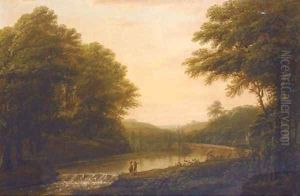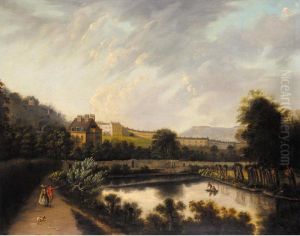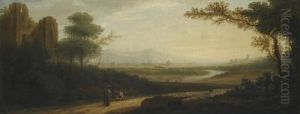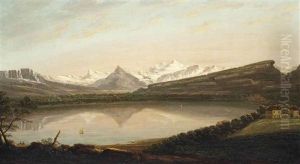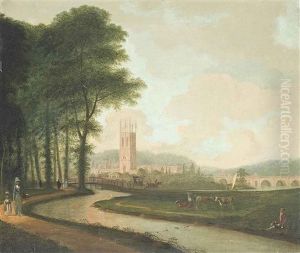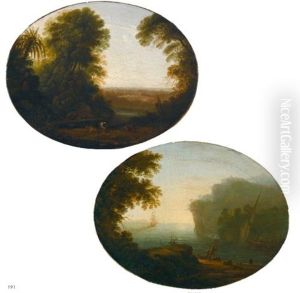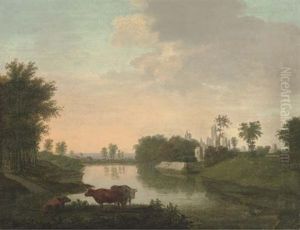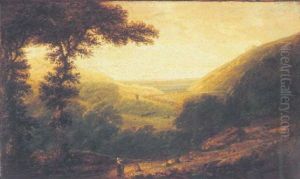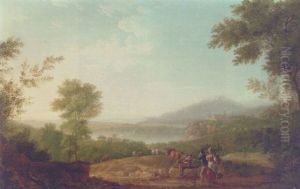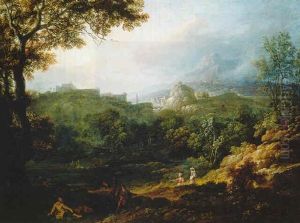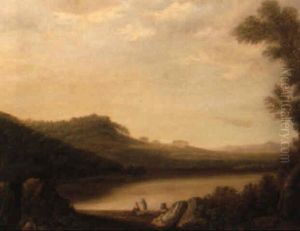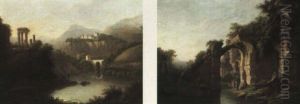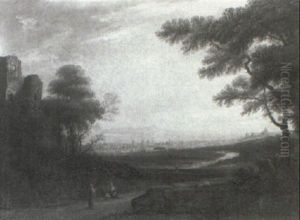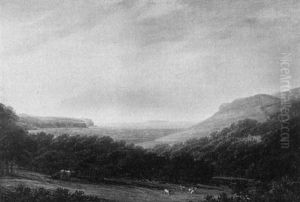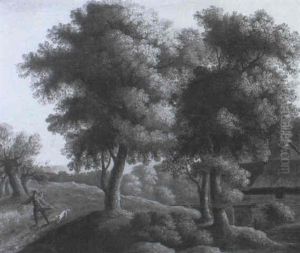Edmund Garvey Paintings
Edmund Garvey was an Irish landscape painter born in 1740 in Enniscorthy, County Wexford, Ireland. Little is known about his early life and training, but it is believed that he might have been self-taught or may have received some instruction from local artists. Garvey's work is indicative of the 18th-century Irish school of landscape painting, which was emerging as a significant genre at the time, influenced by the romantic movement and the picturesque aesthetic.
Garvey moved to Dublin in the 1760s, where he began to exhibit his work. His earliest known exhibit was at the Society of Artists in Ireland in 1765. He continued to show his work there until the society's dissolution in 1773. The Irish landscape, with its rugged terrain and dramatic weather, provided ample inspiration for Garvey, and he became known for his ability to capture the beauty and mood of the Irish countryside.
In 1779, Garvey moved to London, a common move for Irish artists seeking greater exposure and patronage. In London, he exhibited at the Royal Academy from 1780 to 1806. Garvey's paintings during this period often depicted scenes from the Irish and Welsh countryside, as well as views inspired by his travels to Italy. His work is characterized by a strong sense of atmosphere and light, with particular attention to the effects of weather on the landscape.
Despite his success as an artist, Garvey struggled financially throughout his life. He was never able to secure the patronage that would have provided a stable income. Nevertheless, his work was well-received, and he maintained a reputation as a skilled landscape painter.
Edmund Garvey died in 1813 in London. His paintings are now held in various public and private collections, and he is remembered as an important figure in the development of Irish landscape painting. Garvey's legacy lies in his ability to convey the unique spirit of the Irish landscape, influencing later generations of Irish artists.
